Ingrown hair is a problem that affects the majority of human population. This is not a serious condition and is treated rather easily. Sometimes ingrown hair may be recurrent but just by simple avoiding factors that lead to ingrown hair one may successfully prevent this condition from reoccurring.
Ingrown hair is hair that got stuck in a skin follicle and has not managed to reach the surface of the skin. Ingrown hair cyst occurs due to ingrown hair and may affect each and every part of the body covered in hair. Pynoidal cyst is, for example, only one type of ingrown hair cysts that forms in the sacrococcygeal area and causes significant problems. It usually requires surgical procedure to be removed completely. Still, not all of ingrown hair cysts are that severe.
Ingrown hair cyst contains fluid and may sometimes be filled with puss. Once the hair is released, the accumulated fluid or puss drains and the problem is solved. People who have experienced ingrown hair cyst once are likely to experience this condition again.
Hair Cysts are not a Problem to Ignore
There is a variety of causes that lead to formation of ingrown hair cysts. The underlying cause actually determines the treatment and further prevention against recurrence of the disease.
One of the causes of ingrown hair cyst is previous trauma to the area affected by the cyst. Trauma is basically responsible for certain structural changes in the affected skin which may consequently result in ingrown hair cyst. In cysts caused by trauma there are no hair follicles, there are only ingrown hairs. Prolonged trauma to specific body parts such as friction may induce formation of ingrown hair cysts.

In men ingrown hair cyst usually develops on the face and neck and is caused by improper shaving techniques. Even usage of dull razors may trigger ingrown hair. One more cause includes application of petroleum based face shaving gels or foams. These gels and foams may plug the hair follicles and promote ingrown hair.
And finally, pulling out hair may result in ingrown hair cysts. This occurs in women more since they generally undergo depilation to remove hair from certain parts of their bodies. Pulling of hair with wax may damage hair follicles and lead to formation of ingrown hair cysts.No matter what the cause of ingrown hair cyst is, the condition must be considered serious because it may easily progress into folliculitis, inflammation of hair follicles.
Ingrown Hair Causes Infection
As it has been already mentioned ingrown hair is a hair that has not grown out of the skin completely or the one that is grown back into the skin. Many times ingrown hair is accompanied by infection and irritation of the skin, which can be seen as a bump tender to touch. Some 40% of young people (aging 18 to 25) have experienced such issue at least once, mainly because of waxing or the presence of curly hair. The condition is not limited to women only, since men might also suffer from ingrown hair and accompanying folliculitis.The infection does not occur instantly. Namely, initially the hair is being waxed or shaved improperly and it stays inside the hair follicle, being not able to reach the surface of the skin. Bacterial or fungal infections (folliculitis) occur later, as a consequence of ingrown hair. Mild cases of folliculitis need no medical help, but serious infections have to be treated and looked after by a doctor.
Apart from improper shaving and waxing, ingrown hair and subsequent infection may affect individuals prone to wear tight clothes. Sometimes even using a hot tub or swimming pool that has not been chlorinated sufficiently might provoke folliculitis.Although everyone may experience ingrown hair and associated infection, some people are more likely to suffer from this condition. People who have acne or some other skin problems, overweight people and those who are using corticosteroids or antibiotics will probably have more ingrown hairs than the rest of the population. Living in hot and warm climate may also be a cause of folliculitis.
What to Do with Ingrown Hair Cysts and Folliculitis?
First of all prevent the situation, if you can. Use a new razor every time you shave and clean towel every time you shower or bath. Wash yourself with anti-bacterial soap and avoid tight clothes.When you already experience pain and bumps from an ingrown hair, do not worry. Most infections will clear on their own in a day or two. If that does not happen or the infection is really bad, consult your doctor. He/she might prescribe antibiotics (tablets or cream) or antifungal medications, depending on a cause of infection.
Do not squeeze the infected ingrown hair, and do not pick the pimple, because it may worsen the condition. Sometimes, after you have disinfected the area, it might be helpful to you use a cloth dipped in hot water and press it to the bump. When the hair is on the surface of the skin, you can use tweezers and pull it out.
Some cysts withdraw spontaneously once the hair grows out from beneath the surface of the skin. In case of reoccurring hair cysts one may undergo laser treatment. Hot and wet compresses may be of great help in treatment of ingrown hair cysts. They ease the drainage of the puss which makes ingrown hair more reachable. And finally, exfoliation of the skin may help in release of ingrown hair.
- www.nhs.uk/conditions/ingrown-hairs/
- www.nhs.uk/conditions/skin-cyst/
- Photo courtesy of shutterstock




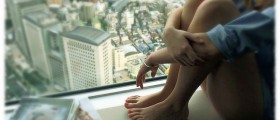


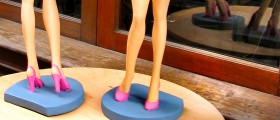
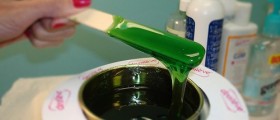
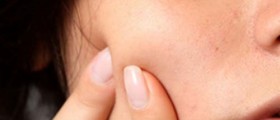
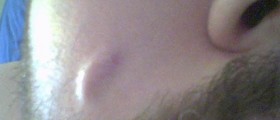



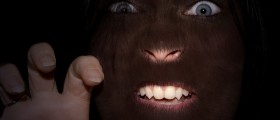
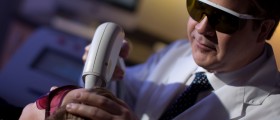
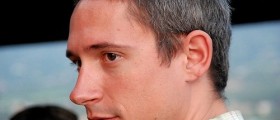
Your thoughts on this
Loading...